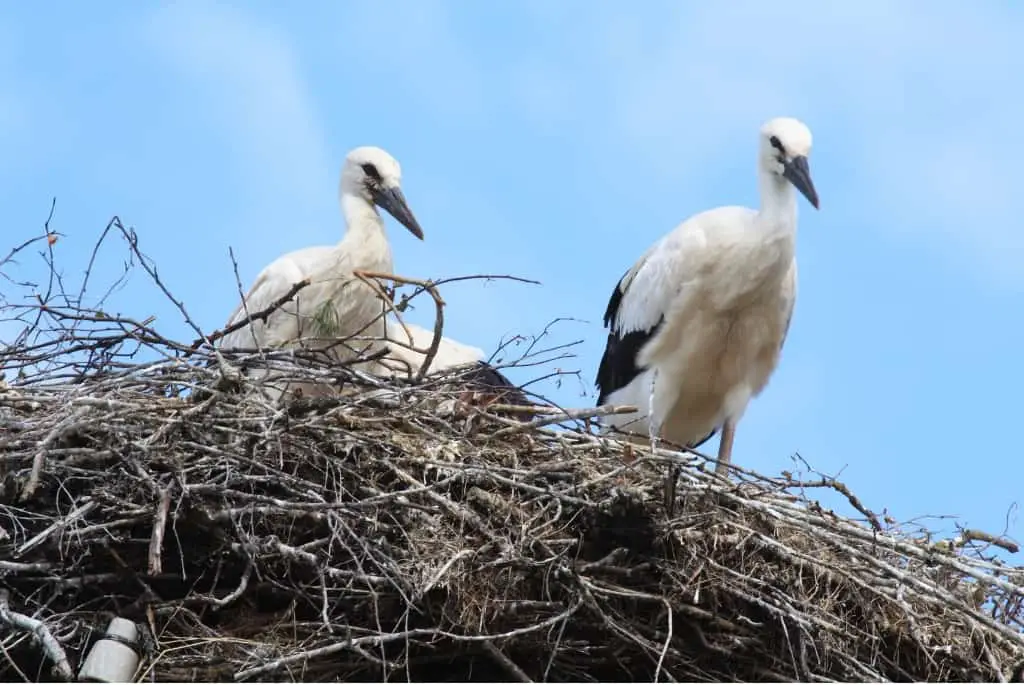
There are more than 11,000 bird species on the planet that have been identified so far. This makes a question like “how long do birds stay in the nest?” a bit hard to nail down to a specific answer. Fortunately, birds can be categorized into two different types of development so we can answer the question, though fairly broadly.
Birds stay in the nest anywhere from 2-3 days up to around 4 weeks. Precocial birds are born able to move around on their own and leave the nest after 2 or 3 days. Altricial birds, born featherless and blind need more care and stay in the nest for 2-4 weeks.
Precocial and Altricial development stages have more levels. Read on to find out more about the lives of young birds in the nest.
We are all just as a baby bird….
Walking into it blind, hungry and unaware of our wings
miss_sassy
Precocial Birds In The Nest
These birds hatch equipped with pretty much everything they need to tackle life on their own. Their eyes are open, and they have a healthy covering of down. They can walk, run and swim a few hours after hatching and will leave the nest within two days.
Precociality is broken down into 4 levels.
Precocial 1 (also called Superprecocial)
Chicks at this level are independent of their parents. These are the offspring of Megapodes like Scrubfowl, Malleefowl, and Brush Turkeys.
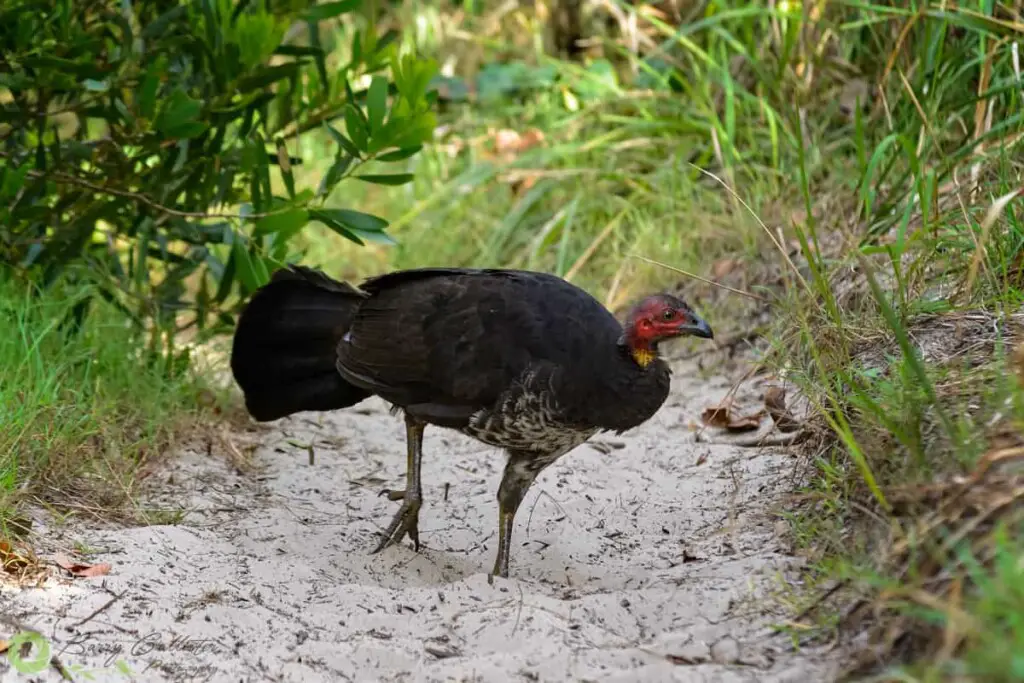
Magapodes do not incubate their eggs with body heat but instead bury them beneath huge mounds of decaying vegetation, in burrows, or beneath the sand. When the chicks hatch, they burrow their way to the surface, fully feathered and in some cases able to fly on the day they hatch.
These birds are found in the Australasian region including Australia, New Guinea, and the islands of Indonesia.
Precocial 2 (simply called Precocial)
This type of development can be found among Shorebirds and Ducks. An example of this is the Australian Wood Duck chicks in the image below. These cute little fledglings will follow their mother around but are capable of finding their own food. They are not fully independent but still able to walk, swim, and feed themselves.

Precocial 3 (or Subprecocial)
Subprecocial chicks leave the nest within a few days and follow their parents around. These birds are shown where food is but generally feed themselves. An example of a bird that exhibits this kind of behavior is Grebes.
Another interesting fact about Grebes is they are often seen eating their feathers or feeding them to their young?! It is thought they do this to prevent injury from swallowing fish bones.
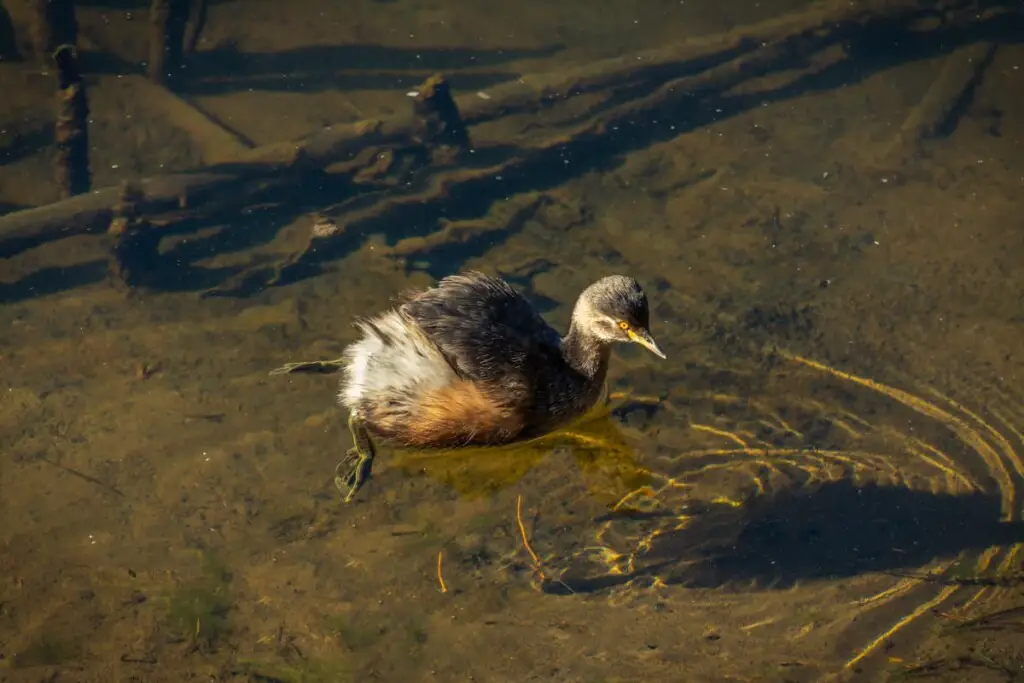
Precocial 4 (or Semiprecocial)
Precocial chicks in this classification again leave the nest within a few days and follow their parents. These birds however are not just shown where food is but are also fed by their parents. Young Gulls and Terns are examples of this development type.
Do birds see color the same way we do? Find out in this post right here on my blog.
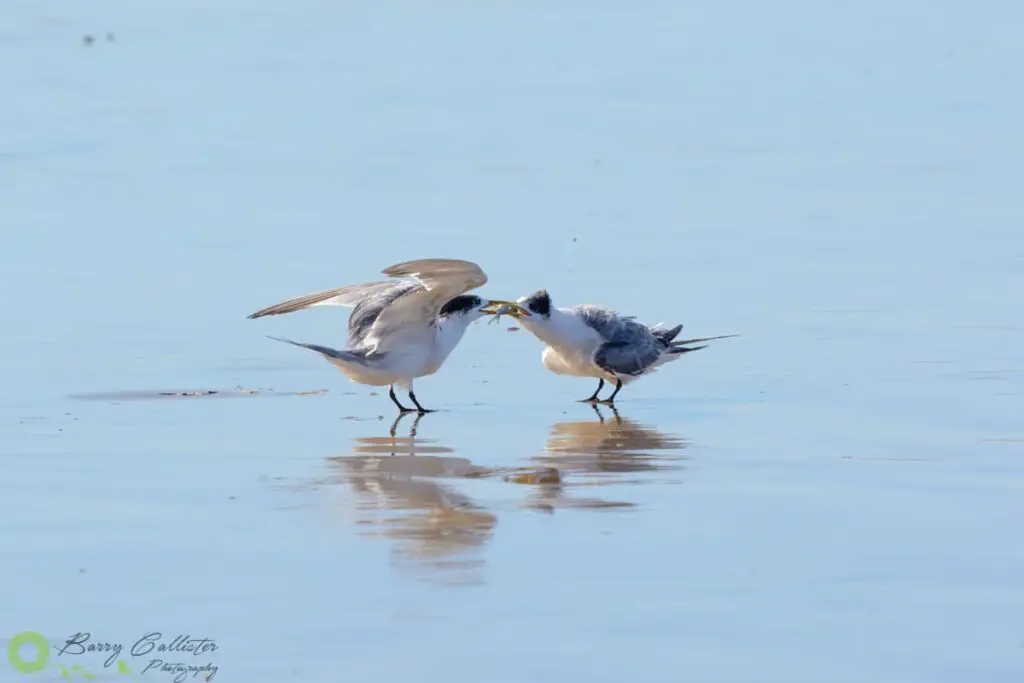
Altricial Birds
We all know an Altricial bird – well, maybe not personally but it’s likely they live in our backyard. Almost half of the world’s birds are classified as Altricial.
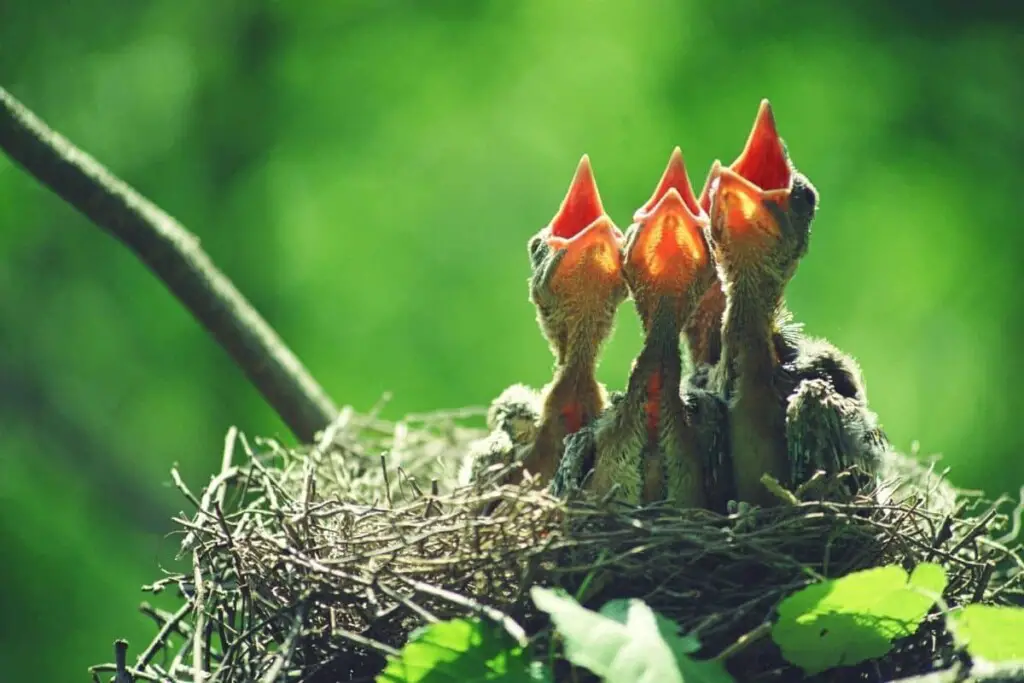
The chicks of Altricial birds crack their way out of their eggs using an “egg tooth.” This is an especially hard formation on the tip of the upper beak. Once free of the egg, they face the world blind, featherless, and completely helpless other than the ability to shriek for food.
These chicks will spend 2 to 4 weeks in the nest being fed and cared for by their parents. During this time they will lose their egg tooth which either falls off or is absorbed back into the bill. They also develop their feathers but in fact, leave the nest several days before they can fly. They will flutter and hop around on the ground to strengthen their wings and legs to the point where they can take flight.
Find out where all that poop the chicks do in the nest goes in my How Often Do Birds Poop? article.
What Happens To The Nest When The Birds Leave?
Most bird species will abandon the nest after their chicks have fledged. This is necessary as predators know to look for a nest as a source of food. It would make no sense to raise your young in a place that is known to predators.
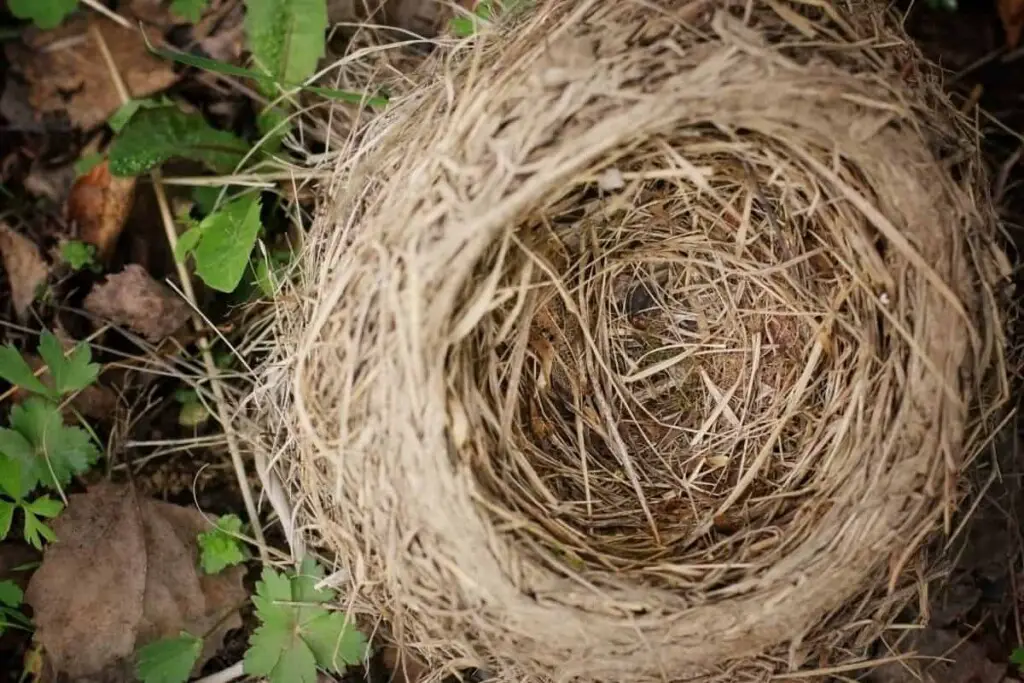
Some birds will use the nest to sleep in during cold winter nights. Cavity nesters such as Owls or Woodpeckers will sleep in the same cavity where they nested. However, these birds will have multiple places to roost within their territories. Again, it makes no sense to stay in one place when you are a target for predators.
Osprey will use the same nest sometimes for up to 20 years. When constructed, their nest will be around 120-150cm across and roughly 50-60cm deep. Both birds in a monogamous pair will add to the nest each year to the point where it can become up to 200cm deep – enough to fit a person inside?!
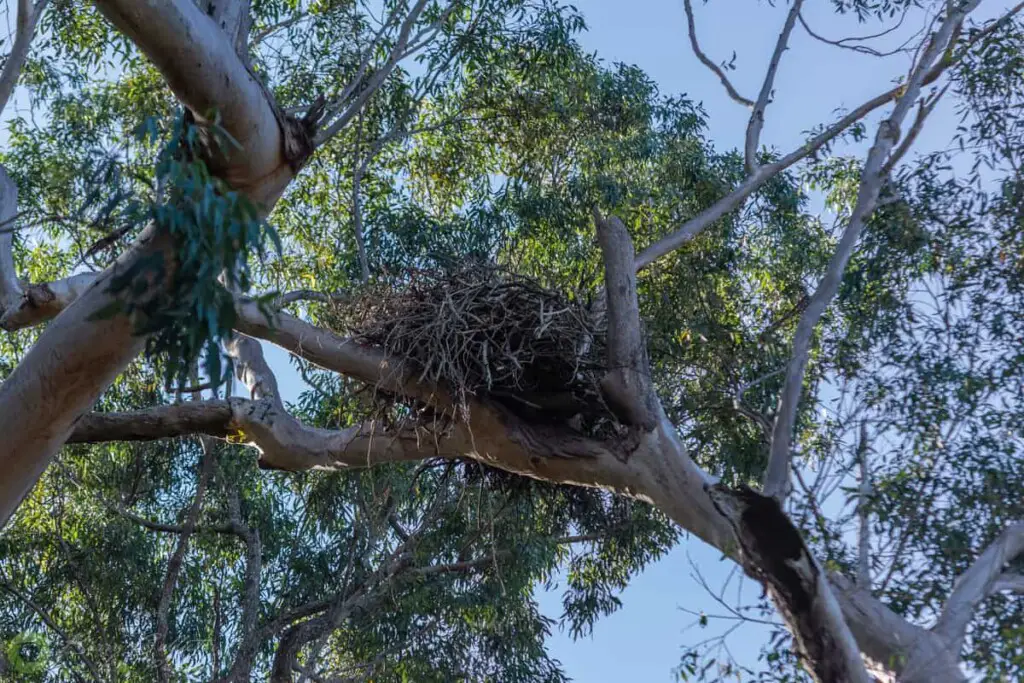
Read More About Birds
If you are hungry for more bird facts, read this post about what time birds go to sleep. They don’t simply turn in when the sun goes down, many birds burn the midnight oil and even nap during the day.
You might even be interested in starting bird watching. Birds are so fascinating to observe in the wild and it can be incredibly relaxing to get out in nature and watch them. Learn 3 simple things you will need to get started in How To Start Bird Watching – 3 things is all you’ll need.
References:
- Precocial and Altricial Young – Essay by Paul R. Ehrlich, David S. Dobkin, and Darryl Wheye. https://web.stanford.edu/group/stanfordbirds/text/essays/Precocial_and_Altricial.html
- Nesting Cycle – article The Cornell Lab of Ornithology NestWatch https://nestwatch.org/learn/general-bird-nest-info/nesting-cycle/
- Nesting and Breeding Habits of Osprey – RSBP https://www.rspb.org.uk/birds-and-wildlife/wildlife-guides/bird-a-z/osprey/nesting-and-breeding-habits/

